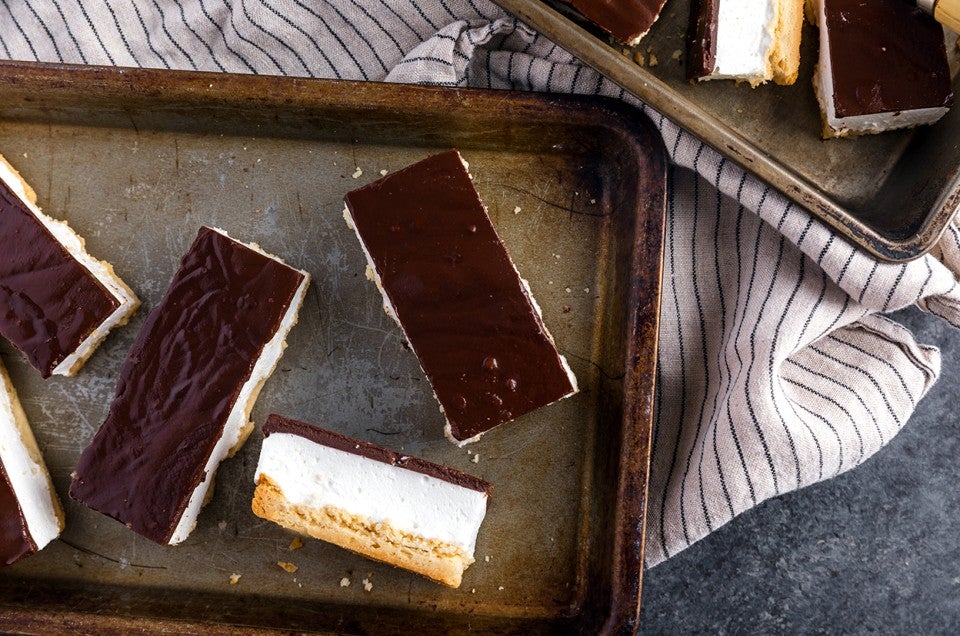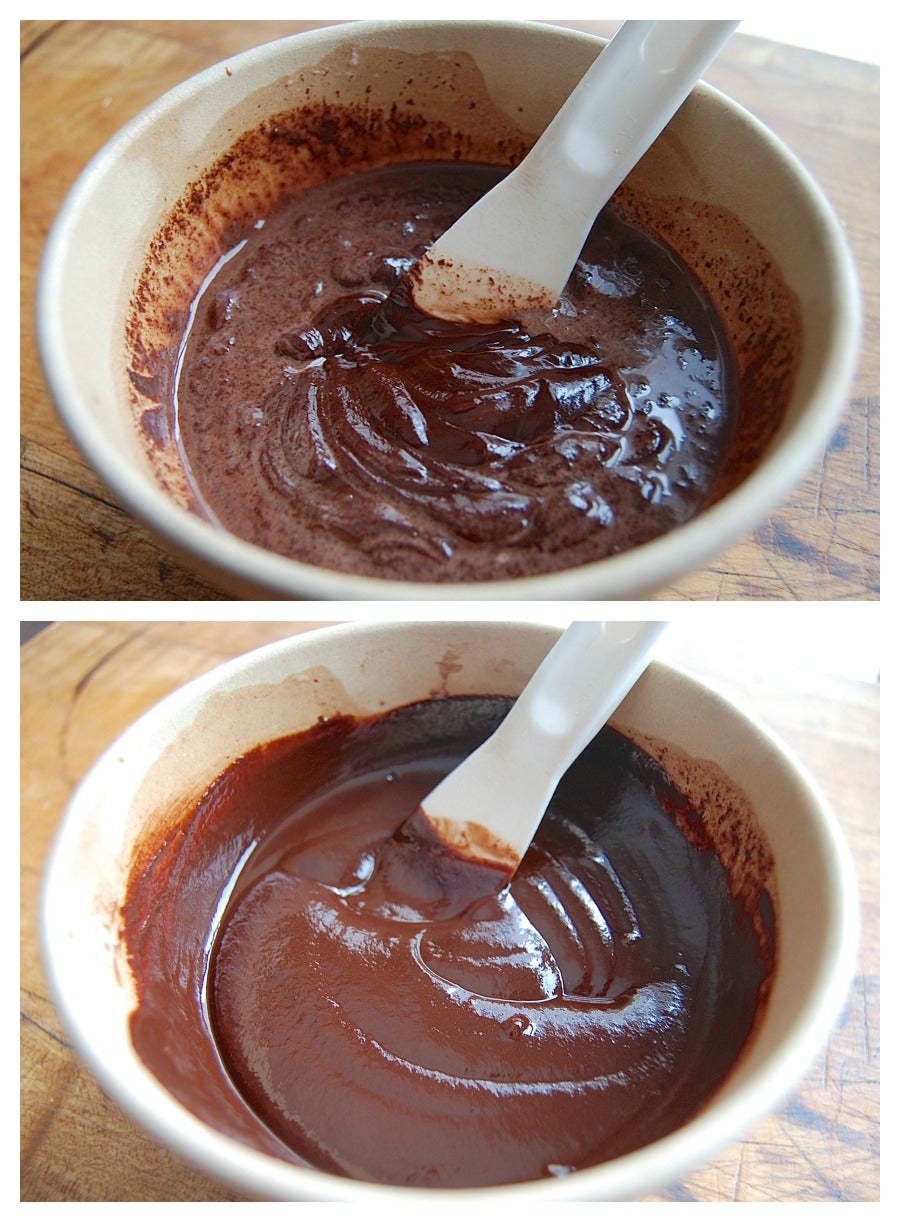


 The King Arthur Flour Company marks its 225th anniversary this year. And we're celebrating by exploring some of America's favorite recipes, decade by decade, starting in 1900. Join us on this fascinating stroll through American food history.
The King Arthur Flour Company marks its 225th anniversary this year. And we're celebrating by exploring some of America's favorite recipes, decade by decade, starting in 1900. Join us on this fascinating stroll through American food history.
The year: 1913. We're in the second decade of the 20th century. What does America look like?
Well, in March, Woodrow Wilson steps into the White House. He creates the Federal Reserve, and the first national income tax is instituted and collected.
The New York World newspaper publishes the very first crossword puzzle, pleasing word addicts across the land.
A rebuilt Grand Central Station opens in New York City, and immediately earns its sobriquet: it's now the largest train station in the world.
Civil War veterans gather in Gettysburg, PA for the 50th anniversary of that great battle. When they meet at the stone wall marking the spot where the Confederates' advance was stopped, veterans from both sides shake hands and weep.
Henry Ford invents the assembly line, and horsepower replaces "horse power" for good.
Notice the chains on this King Arthur Flour delivery truck, though – many roads, even in Boston, remained unpaved.
Camels, the first packaged cigarettes, are born.
And so are Mallomars – which, from the point of view of all of us foodies, is a huge event.
In fact, the entire decade sees enormous growth in both packaged foods and ingredients. Think Crisco shortening and Domino sugar. Jell-O, Marshmallow Fluff, and Kellogg's Cornflakes. Hellmann's mayonnaise, Ocean Spray cranberry sauce, and Prince spaghetti. None of these iconic American foods existed prior to 1910.
The burgeoning packaged food industry urges American women to step away from the stove, and break the bonds of their grandmothers' kitchens. Starting in 1912, women are introduced to a new concept: self-serve "groceries," like the Memphis-based chain Piggly Wiggly, opened in 1916.
There, they can peruse shelves of ready-to-eat treats: first Oreos (1912), Lorna Doones (1912), and Mallomars (1913); and later in the decade, Moon Pies (1917) and Hostess cupcakes (1919).
Now, a century later, we've come full circle and want to bake our own Oreos, and Twix bars, and Hostess Twinkies. What baker worth his or her salt, having tasted "store bought," doesn't at one time or another think, "Hmmm, I'll bet I could make those..."
Which is exactly what I've been wanting to do for the longest time with Mallomars, those chocolate-covered marshmallow cookies introduced by Nabisco over 100 years ago, and beloved by cookie-lovers ever since – especially, apparently, those in the Northeast.
So, where to begin? Let's start at the bottom and work our way up.
I make a simple crust by baking up a batch of our classic Shortbread.
The recipe calls for two round pans, but I was experimenting, and used a 9" round and 8" square (which are equivalent in area – did you know that?) Going forward, I'd use a 9" x 13" pan.
Next, the marshmallow filling.
Our Homemade Marshmallows, enhanced with a good hit of vanilla, make (dare I say) a tastier filling than that in the original cookie.
Spread the marshmallow atop the shortbread crust(s).
Now at first, I imagine replicating Mallomars exactly, right down to their round, domed shape.
But the whole process is rather... fussy. And as any of you who've been reading my posts for awhile know, I'm not blessed with the Martha Stewart gene; "fussy" and I don't get along.
Cutting the rounds with a biscuit cutter (lots of unbeautiful trimmings), trying to gently push the sticky marshmallow-topped cookies out of the cutter...
Dipping the cookies in carefully tempered chocolate, in an attempt to replicate Mallomars' thin, satiny chocolate "shell..."
As you can see, I basically strike out, at least in the looks department. My clone (on the left) is bigger than the real Mallomar on the right, with more marshmallow; and it lacks the original's distinct shape.
I'm also not skilled enough at chocolate tempering. Check out these two cookies. The one on the right I absolutely nailed, melting the chocolate to JUST the right temperature, stirring in "seed" chocolate, and ending up with the perfect thin, crisp, satiny Mallomar shell.
On the left – FAIL. I must have overheated the chocolate.
But just because I fail, it doesn't mean you have to! My fellow blogger Susan Reid – a veteran chef, cake artist, and cookie decorator – says, "If you're determined to replicate the original shape, scoop and flatten individual shortbread bases, bake ’em, then scoop the marshmallow, too, greasing the scoop each time so it comes out rounded and clean. Or, if you’re super-determined, put the marshmallow mixture into a pastry bag and pipe it onto the shortbread circles. That would get you there before the mixture sets up."
"Freeze the topped cookies and pour warm ganache over them on a rack. Thin shell, big mess. Lots of puddles to swipe your finger through, though..."

So, plan B. I stir together some ganache – it doesn't need tempering, so I'm already one step ahead. I combine 2 2/3 cups (16 ounces) chocolate chips and 2/3 cup (5 3/8 ounces) heavy cream in a microwave-safe bowl; microwave until the cream is steaming, then stir until the chocolate melts. Blessedly simple.
Then, I simply spread the ganache atop the pan of uncut cookies.
And later, once the chocolate's set, I cut the whole thing into bars.
No, they don't look perfect, like they just dropped out of the Mallomar machine. But yes, they're very, very tasty. I mean, imagine buttery shortbread; fresh, vanilla-scented homemade marshmallow, and dark chocolate ganache.
Oh, and one more thing. Speaking of cutting, how do you avoid the chocolate smear that usually happens when you cut anything topped with chocolate and filled with something lighter-colored – like marshmallow?
The bottom bar was cut the conventional way, top down.
The top bar, with its pristine white filling, I cut by turning the cookie slab over and cutting through the bottom – no chocolate on the bottom, no chocolate smear in the center.
I may not be prissy – but I'm eminently practical!
Please read, bake, and review our recipe for Mallow Bars.
We hope you're enjoying our special 225th anniversary blog series, American Baking Down the Decades. Interested in more posts? See the following:
1900-1909: Birth of the Brownie
1920-1929: Cake Meets Technology
As always, my thanks to one of the best food history resources out there, foodtimeline.org.